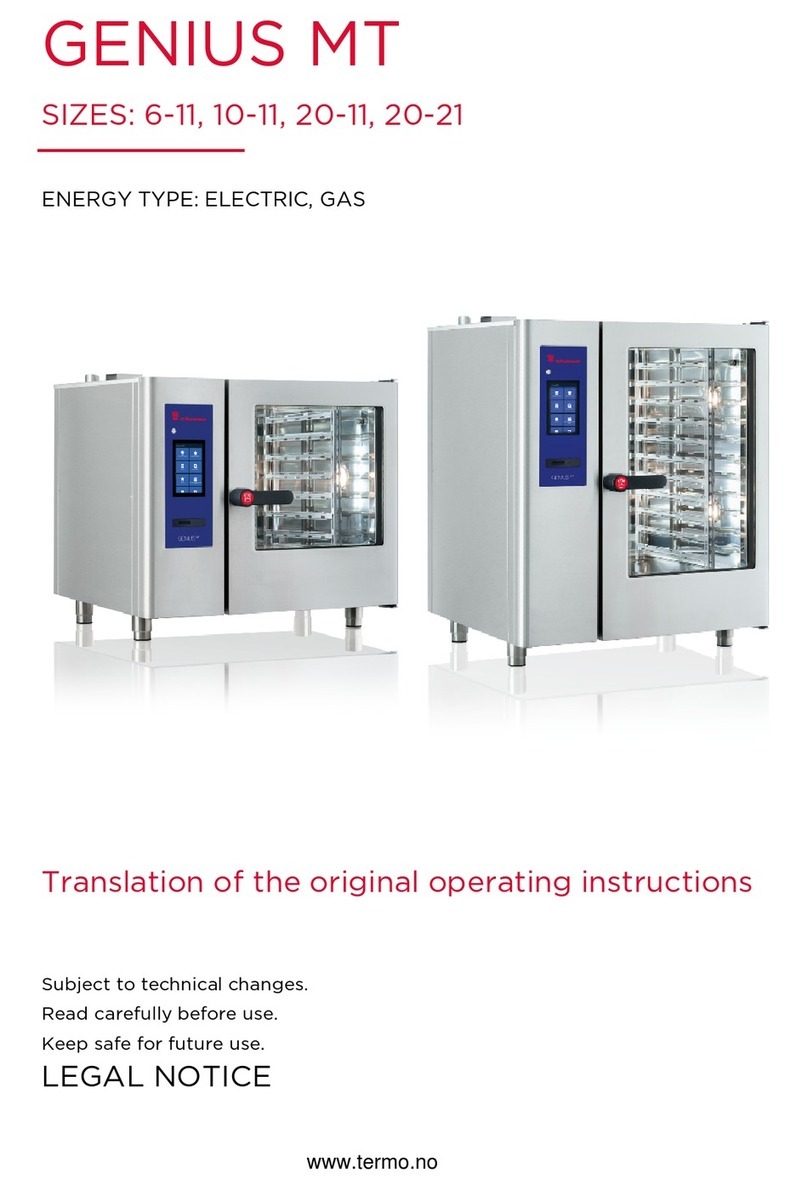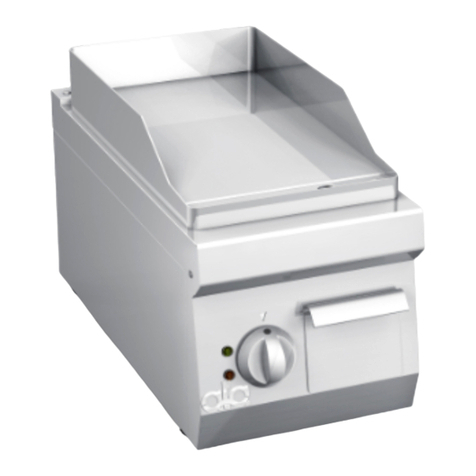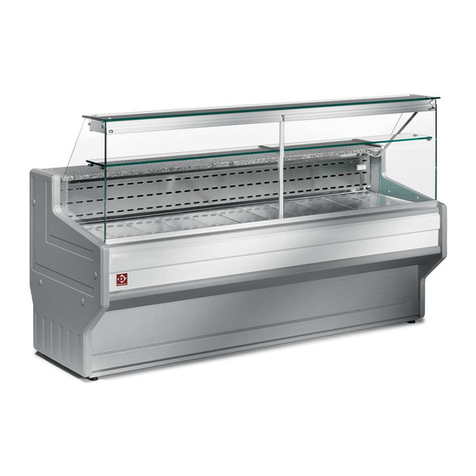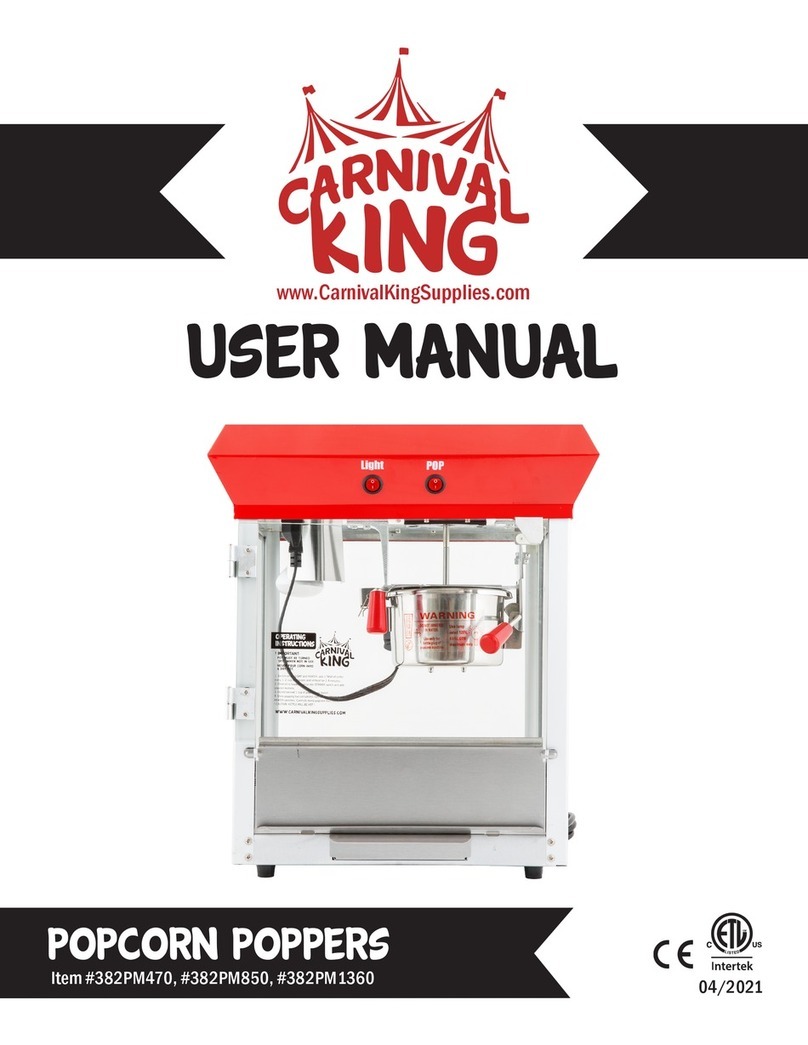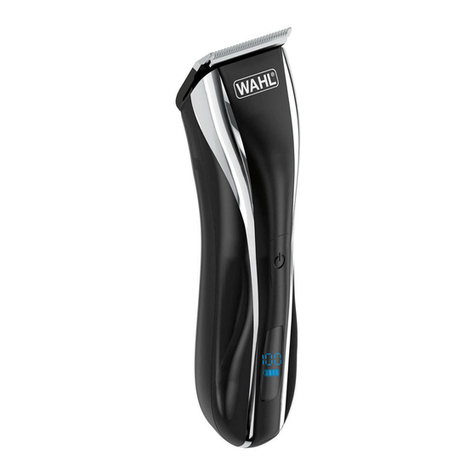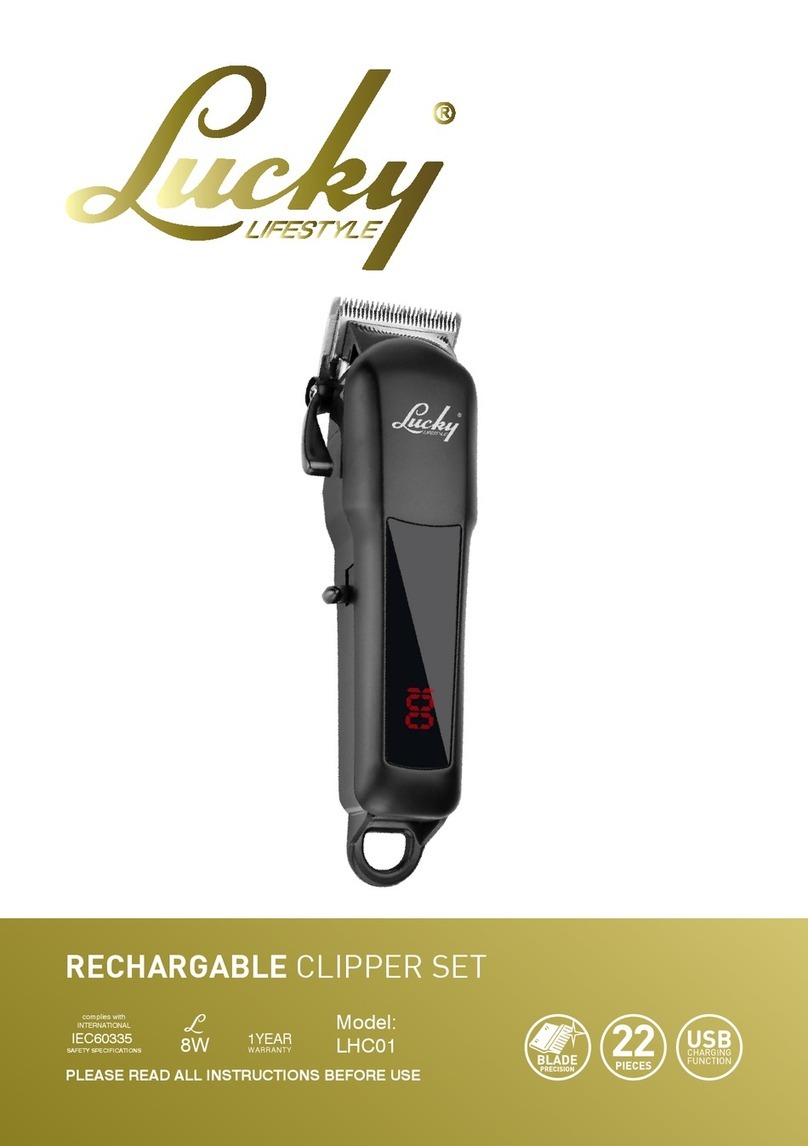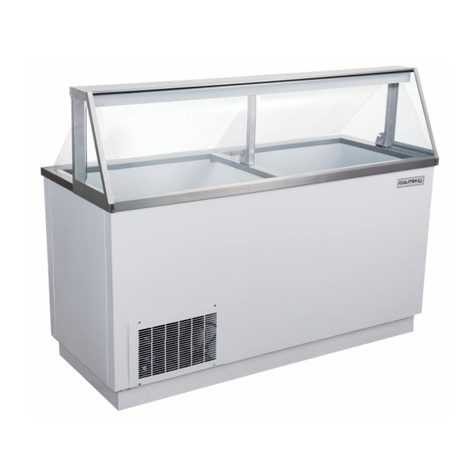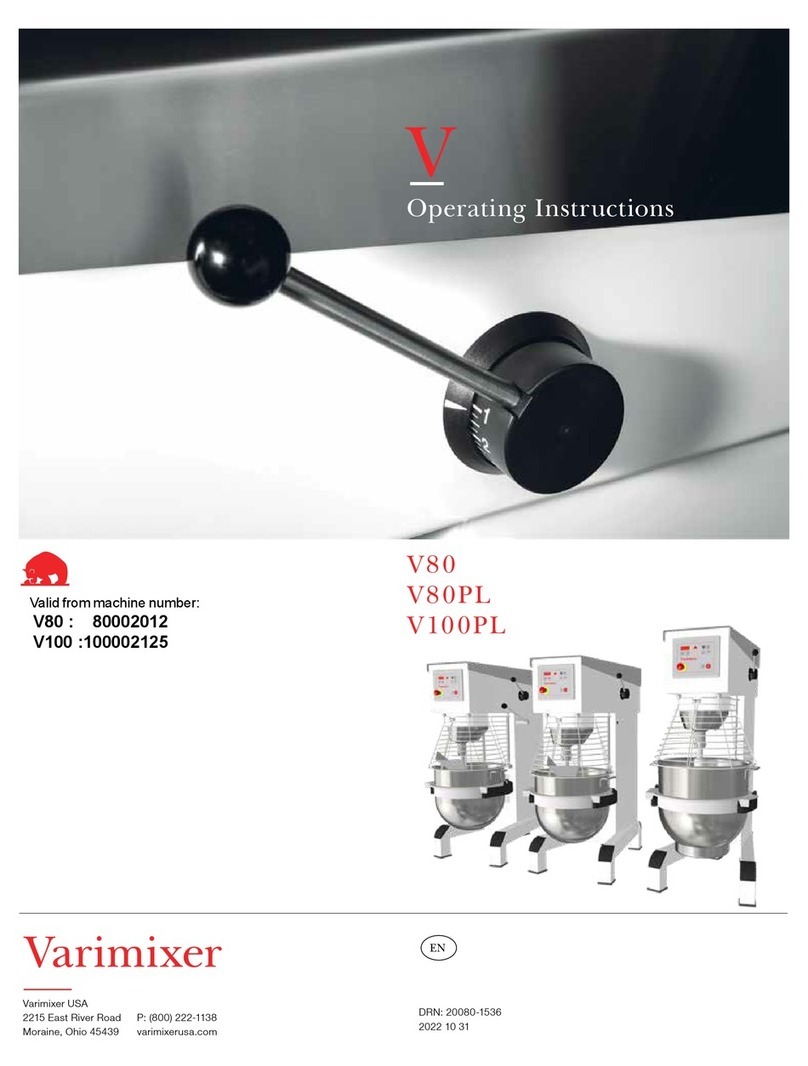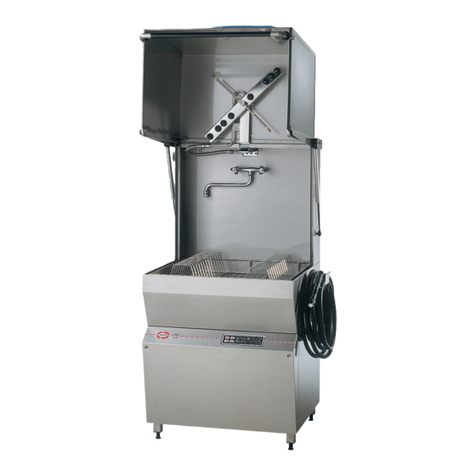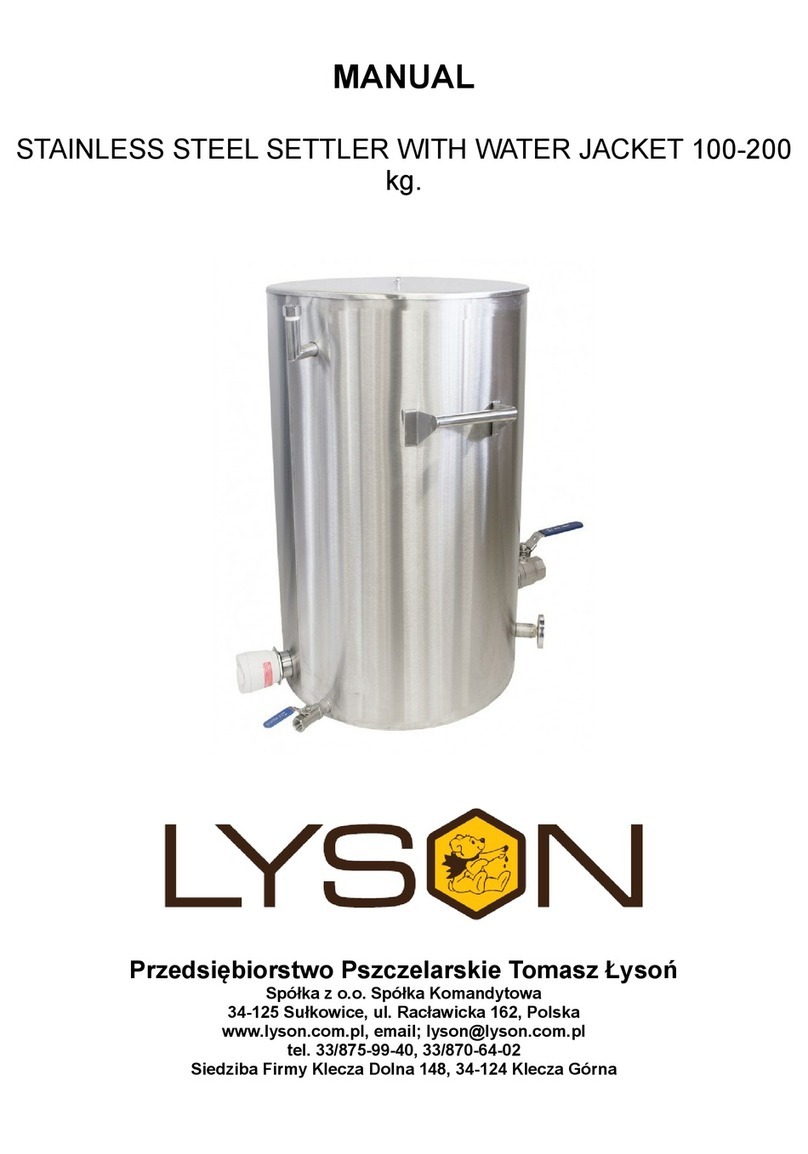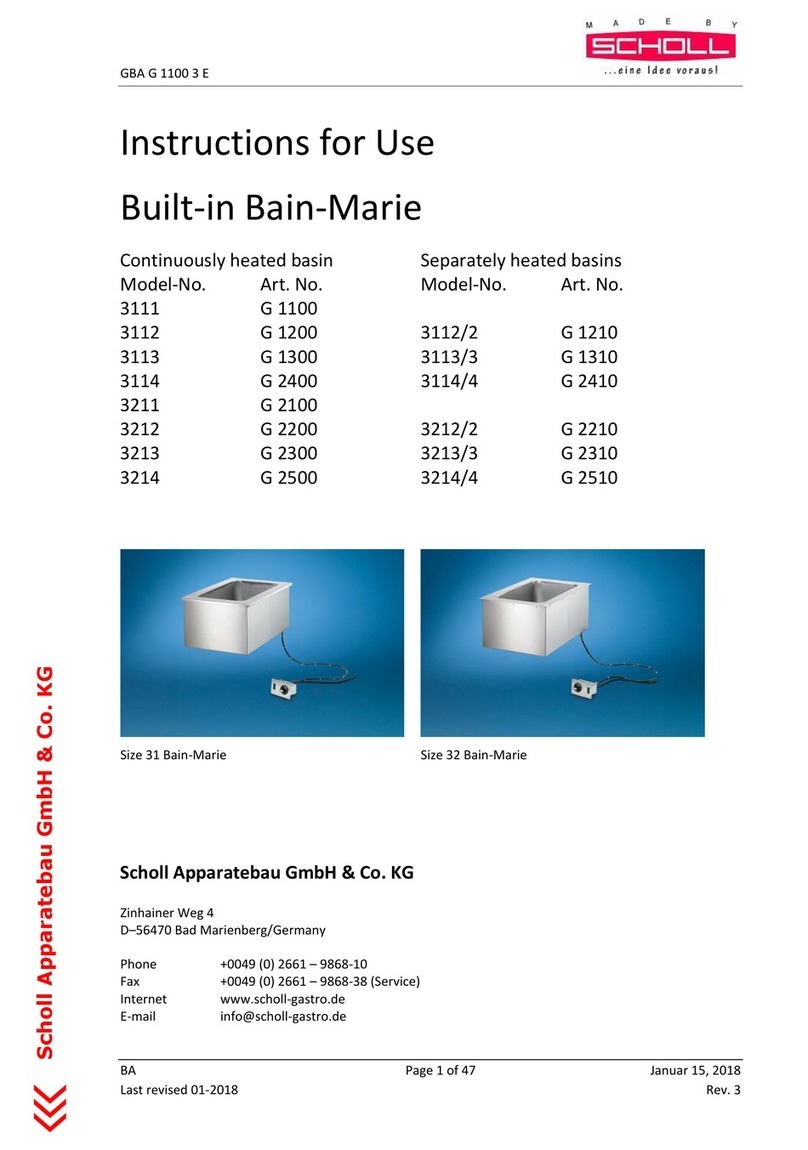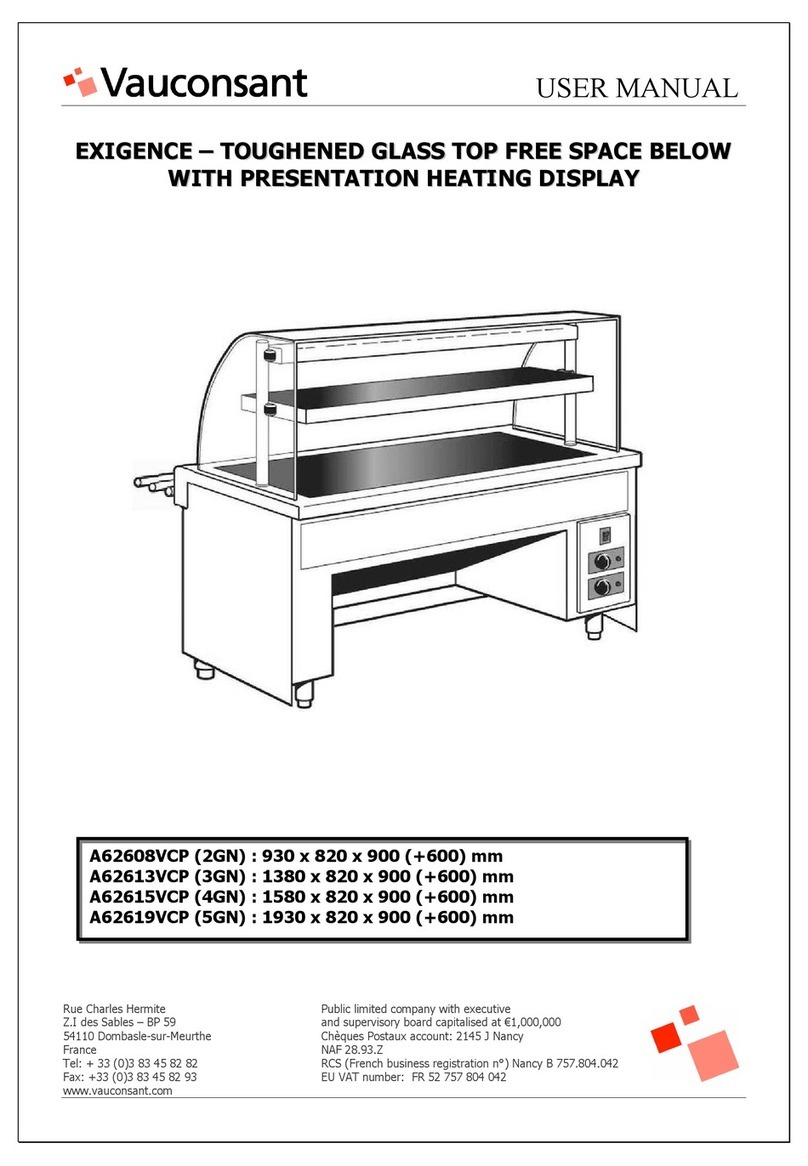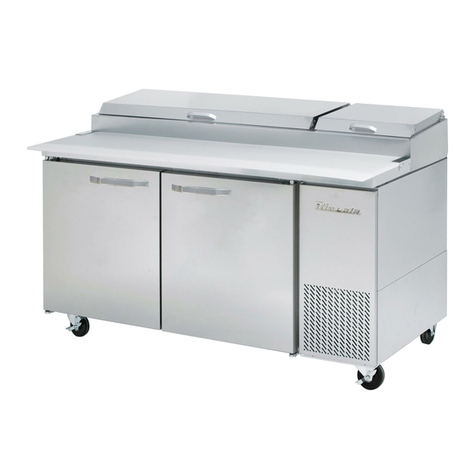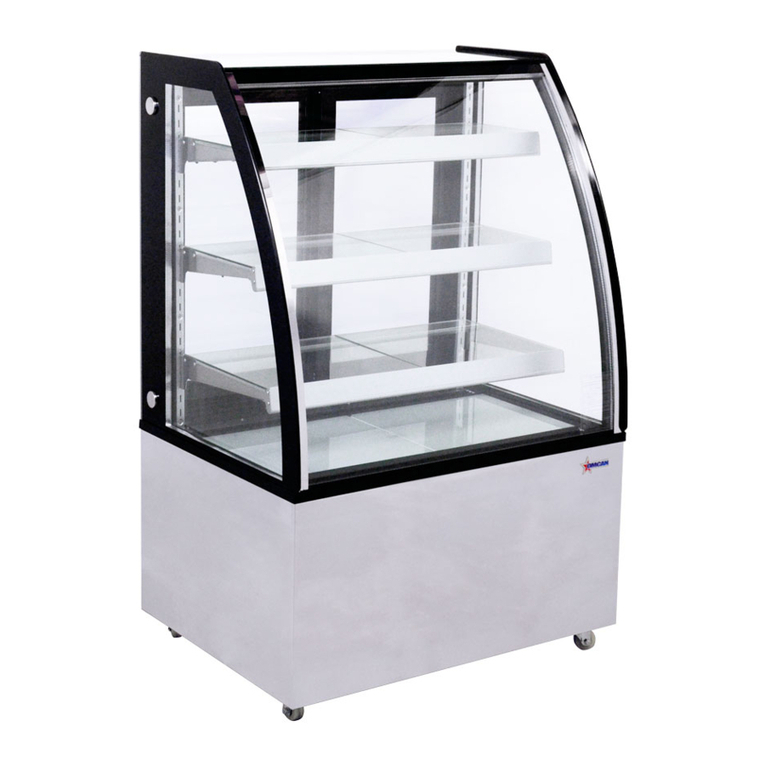SELMI ROASTER CENTOVENTI Troubleshooting guide

ROASTER CENTOVENTI
manuale d'uso e manutenzione


PREFACE
SELMI S.r.l. would like to thank you for purchasing
our "ROASTER Centoventi", roasting machine with
fluidized bed.
This manual is to be considered an integral part of
the machine and its purpose is to allow use of the
machine throughout its life, from delivery until
demolition. Therefore, we suggest that your read it
carefully. Everyone working with the machine must
read this manual.It is also necessary to keep the
manual in a place accessible to operators at all
times.
In the event of loss or damage of this manual,
please ask SELMI S.r.l. to send you a replacement
copy.
The technical information contained in this manual
belongs to SELMI S.r.l. and must be considered
proprietary.
The total or partial reproduction of the graphic
design, text and illustrations is forbidden.
With a view to constant technical improvement, the
company reserves the right to make any necessary
amendments to the content of the manual, to the
machine or to parts thereof. Consequently, some of
the illustrations may differ slightly from your
machine.
This document is an integral part of the "ROASTER
Centoventi", roasting machine with fluidized bed as
described in section 1.7.4 of annex I of directive
2006/42/CE.
The Italian edition of this manual contains the
original instructions. The foreign language editions
are to be considered as translations of the original
instructions.
© Copyright SELMI S.r.l. Edition January 2015
EC DECLARATION OF CONFORMITY
The manufacturing company SELMI S.r.l., with main office in S. Vittoria D'Alba (CN) Italy –Via Statale,
151,in its capacity as manufacturer, declares, under its own responsibility, that the machine named:
"ROASTER Centoventi", roasting machine with fluidized bed
Serial number:
is compliant with all the provisions contained in the following directives:2006/42/EC (machine directive),
2004/108/EC (electromagnetic compatibility) and EC regulation 1935/2004 (contact with foodstuffs).
The norms adhered to that are used as a reference for the design, realization and testing of the machine are
listed in the technical files archived at Selmi Srl.
The manufacturer also wishes to inform you that the technical file may, in the cases envisaged by the
directive, be put together by the manufacturing company.
Year of construction The liable person
Date

4
1. General information 5
1.1. Structure of the manual 5
1.2. Messages Used 5
1.3.Aim and contents 5
1.4. Preservation of the manual 5
1.5. External components 6
1.6. Internal components 8
1.7. Details of the manufacturer 18
1.8. Identification plate of the machine 18
1.9. Identification plate of the CE marking 18
1.10. Inteded use 18
1.11. Operating environment 18
1.12. Noise level 18
1.13. Technical characteristics 19
1.14. Dimensions 19
1.15. Storage 20
1.16. Disposal 20
1.17. Warranty 20
1.18. person qualified to operate 21
2. Safety section 22
2.1. Safety information 22
2.2. Safety limitations 22
2.3. Safety symbols and plaques 23
2.4. Safety and protection devices 23
2.5. Client’s safety measures 24
2.6. Personal protection equipment 24
2.7. Residual risks 25
2.8.Applied Directives 25
2.9. Harmonized technical norms 25
3. Moving and transportation section 26
3.1. General norms 26
3.2. Packaging 26
3.3. Transportation 27
3.4. Removal of the packaging 27
4. Installation section 27
4.1. Positioning 27
4.2. Electrical connections 27
4.3. Installation of the machine 28
5. Operation section 29
5.1. Description of the controls 29
5.2. Using the machine 30
5.3.Alarms 35
6. Maintenance section 36
6.1. General information 36
6.2. General safety practice 36
Cleaning and maintenance 35
7. Technical diagrams section 39
7.1. Electrical circuit diagram 39
8. Spare part section 48

5
1. General information
1.1. Structure of the manual
To simplify the reading and understanding of the
information contained in this manual and to make
searches quicker, it has been divided into sections, each
dedicated to a specific subject.
1.2. Messages used
Attention
This type of message is used to draw the reader’s
attention to more delicate or particular procedures
which, if not carried out correctly, may pose a risk
to the safety of the operator and cause damage to
parts of the machine.
Warning
This type of message is used to draw the reader’s
attention to procedures which, if not carried out
correctly or at pre-set intervals, may cause damage
to the machine or its parts, as well as to the product
being processed.
Environment
Messages relating to the environment draw the
operator’s attention to the rules to be followed to
prevent the risk of environmental damages
deriving, directly or indirectly, from use of the
machine.
Note
These messages highlight instructions, advice and
notes that can be particularly helpful during the
various uses of the machine.
1.3. Aim and contents
This manual has been drawn up in consideration of the
requirements of directive 2006/42/EC and paying
particular attention to describing all the procedures
necessary to obtain the best working conditions for the
machine and its operators, without neglecting product
quality:
The aim of this manual is, therefore, to provide the user
with all the information necessary for the correct use and
maintenance of the machine. Consequently it is absolutely
necessary:
- to meticulously follow the instructions given in the
manual during every phase of the machine’s life,
from transportation to demolition;
- for every machine operator to thoroughly read the
contents of this manual;
- for the company’s safety officer to make sure that all
machine operators have clearly understood how the
machine works
Attention
In case of doubts on the correct interpretation of
the instructions please contact the manufacturer to
obtain the necessary clarifications. All those
carrying out any kind of operation on the machine
must have thoroughly read and understood the
contents of this instruction manual.
Warning
If this manual is damaged or lost, please ask the
manufacturer or the authorised distributor in the
country where the machine is being used for
another copy.
1.4. Preservation of the manual
The instruction manual is an integral part of the machine
and must be used to train and inform professional figures
operating on the machine. Consequently, it is necessary to
follow certain simple instructions regarding its
preservation, as follows:
- store the manual in areas protected from humidity and
heat, so as not to jeopardise the quality or legibility of
any part of the publication;
- keep the manual is an easily accessible place known
to the machine operators;
- avoid handling the manual with dirty or greasy hands;
- if you think it is necessary to highlight important steps
of the manual, use non-permanent systems, to
preserve its legibility;
- do not remove, rip or rewrite any parts of the manual
for any reason.

6
1.5. EXTERNAL COMPONENTS
1) Exhaust system roasting area
2) Exhaust system of the cooling area
3) Product exit
4) Electrical power supply
1
2
2
3
4

7
EXTERNAL COMPONENTS
1) Filters area
2) Skin collector
3) Side protection
4) Pipe for loading the product
5) Exhaust pipe roasting area
1
2
3
4
5

8
1.6. BACK SIDE OF THE MACHINE WITHOUT THE PROTECTION
1) Exhaust system roasting area
2) Filters
3) Exhaust system of the cooling area
4) Skin collector
1
2
2
3
4

9
UPPER PART WITHOUT THE PROTECTION
1) Charging container
2) Window control of the roasting chamber
3) Roasting chamber
4) Control panel
5) Cooling chamber
6) Blower for charging the product
7) Exhaust system roasting area
8) Sensor level
9) Roasting chamber lights
10) Emergency button
11) Start/Reset button
5
2
4
6
1
2
2
3
2
7
8
9
2
11
10

10
UPPER PART WITHOUT THE PROTECTION
1) Roasting chamber side blower
2) Electrical resistance for the side blower
3) Roasting chamber
1
1
2
2
1
2
3
1
2

11
LEFT SIDE WITHOUT THE PROTECTION CARTER
1) Roasting chamber bottom bloower
2) Electrical resistance bottom blower
3) Connection between the roasting and the cooling chamber
4) Cooling chamber
5) Compressed air supply
6) Manometer
7) Electrical valves group
8) Electrical power supply
2
4
3
6
2
1
5
8
7
2

12
DETAIL OF LEFT SIDE WITHOUT THE PROTECTION
1) Air temperature probe (bottom)
2) Electrical resistance
3) Pipe coming from the bottom blower
1
1
2
2
1
1
2
3
1
2

13
DETAIL OF LEFT SIDE WITHOUT THE PROTECTION
1) Pipe to clean the roasting cone
1
1
2

14
RIGHT SIDE WITHOUT PROTECTION CARTER
1) Mixer motor for the cooling chamber
2) Piston for the opening/closing of the roasting chamber cone
3) Exit of the finish product
4) Cooling fan
5) Piston for unload the product
6) Exhaust pipe of the cooling chamber
7) Exhaust pipe for the aspiration blower
7
3
5
1
2
4
6

15
DETAIL OF UPPER PART WITHOUT THE PROTECTION
1) Heart product temperature probe
2) Air temperature probe (side)
3) Air compressed blow
1
3
2

16
ELECTRICAL PANEL
1) Cooling fan
2) Electrical panel door security micro
3) Power board
4) Inverter
5) Heating elements relay
6) Inverter filter
7) General contactor
8) Security protection
9) Transformer
10) 220 V Fuse protection
11) Ground connection
1
6
2
1
1
6
5
1
3
10
9
7
8
5
4
11

17
POWER BOARD
1. Absorption control bottom electrical resistance
2. Absorption control side electrical resistance
3. Mixer motor connection
4. Cooling fan connection
5. Charging product blower connection
6. 380V protection fuses
7. Connection 380V
8. Connection 24V a.c.
9. Air compressed for clean the cone
10. Solenoid pneumatic actions
A. Opening the roasting cone
B. Unload product
C. Air compressed blow
11. Fan cooling electrical panel
12. lights roasting chamber connection
13. Relay Heating resistance
14. empty
15. Sensor level charging container
16. Inverter roasting chamber bottom blower connection
17. Inverter roasting chamber side blower connection
18. Probes connections
19. Flat cable connection
20. 24V protection fuse
10A
6
8
2
3
4
16
7
5
1
9
11
12
13
14
15
17
18
19
10B
20
10C

18
1.7. Details of the manufacturer
The machine described in this instruction manual was built
by:
SELMI S.r.l.
Via Statale, 151 –12069 –S. Vittoria D’Alba (CN) Italia
Tel. 0172.479273 - 0172.479275 - Fax 0172.477814
www.selmi-group.it - info@selmi-group.it
1.8. Identification plate of the machine (CE marketing)
There is a plate, similar to the one shown here, on the
machine, indicating details of the manufacturer, the CE
conformity mark and the machine’s serial number. Always
state this number when communicating with the
manufacturer.
Example of identification plate on the machine structure
TYPE
SERIAL NUMBER
YEAR
WEIGHT
1.9. Identification plate of the CE marking electric
panel (low voltage)
ELECTRIC DIAGRAM
No.
INSTALLED POWER
KW
VOLTAGE
V
PHASES
No.
FREQUENCY
Hz
CURRENT AT FULL LOAD
A
CURRENT AT HIGHER LOAD
A
CUT OUT CAPABILITY
kA
PROTECTION
IP
Example of identification plate on electrical panel. For the
correct data, see the plate attached to the panel and the
data shown in the section on the machine’s technical
specifications.
1.10. Inteded use
Roaster Centoventi was designed to work on a continuous
cycle of automatic processing, it has a tank capacity of
20/25Kg and has the ability to roast 50Kg of coffee or dried
fruit per hour. It uses an original and exclusive air cyclone
system (vertiflow® patent) which has a temperature
sensor at the heart of the product. It is particularly versatile
for the roasting of coffee, hazelnuts, almonds, pistachios
and any other appropriate product...The machine has a
number of programs which control the heating
temperature, the roasting time, the cooling time and the
final automatic discharge of the products. The programs
can be personalised to obtain the desired grade of
roasting time after time.
Warning
A use other than that specified is considered
improper. The machine is intended for professional
use only.
Attention
Do not place any small objects near the control
panel or the tank: they could fall and enter the tank,
which would contaminate the product.
1.11. Operating environment
To guarantee proper functioning the machine must be
protected from atmospheric agents. Its ambient
operational temperature should be between 15C° and
35C° with relative humidity not exceeding 70%.
The working environment must be clean, sufficiently
illuminated and away from an explosive environment.
The environmental characteristics of the installation site
are specified in section 4.
Attention
The machine’s fixed guards have a variety of
openings to allow the internal units to cool. When
the machine is running, make sure that these
openings are not covered by cloths or objects that
obstruct proper air flow.
1.12. Noise level
The phonometric tests carried out on this specific machine
model show an acoustic pressure lower than 70 dB(A).

19
TECHNICAL CHARATERISTICS
Roasting chamber capacity:
20/25 Kg
Roasting chamber material:
inox AISI 304 L
Heating:
Electrical resistances
Controls:
Double electronical card
Weight:
500 Kg
Power installed:
22 kW
Voltage supply:
380V
Number of phases:
3
Frequency:
50Hz or 60Hz*
Noise
< 80 dB
Protection degree:
IP65
* This data can change according to the contractual
installation conditions. For correct data refer to the
plate inserted inside the electric panel..
Dimensions
Air compressed required
220 l/min
Maximum load Power:
6 bar minimum
Air charateristics
Dry and disoiled and filtered

20
1.15. Storage
Remove the remaining product left in the machine
following the instructions in the appropriate section.
Stop the machine using the main switch and
disconnect it from the electricity main. Move it to a
spacious place (it is necessary to work all around the
machine).
Clean the tank, the removable components (i.e. screw
pump, mixer, nozzle) and the pipes as described in the
appropriate section.
Attention
It is absolutely necessary to follow the
instructions in order to insure the safety of the
operators and to avoid damaging the machine’s
removable parts.
Use a brush to cover the movable components and the
mechanical moving parts with a thin layer of food grade
lubricant. This can later be removed with an alkaline
de-greaser (Sodium Hydroxide) if the machine needs
to be re-installed.
Carry out the same operation on the machine surfaces,
taking care of avoiding the heating elements located in
the inner part of themachine.
Gather the parts (use as reference the delivery packing
list) and put them in the original packaging. Place
packets of hygroscopic salt based on silica gel in the
packaging.
Store all the parts in a sheltered place away from
atmospheric agents and in temperatures from 0° C to
40° C. Cover the parts with nylon in order to prevent
the accumulation of dust.
1.16. Disposal
Disposal will occur at the end of the working life of the
machine, which under normal conditions of use and
maintenance will be over ten years.
In the case of disposal all the components of the
machine will have to be disposed of in adequate waste
yards according to the legislation in force.
Before disposal it will be necessary to separate the
plastic or rubber parts and the electrical and electronic
material.
Environment
Parts made solely of plastic, aluminium and steel
can be recycled in the appropriate collection
centres.
According to the RoHS regulations electronic
boards and electric material should be recycled
separately in authorised collection centres.
1.17. Warranty
The manufacturer offers a warranty on this machine
model for a period of 24 months from the purchase
date, as shown on the fiscal document issued at the
time the machine is delivered.
The warranty will be void if the machine is repaired by
a third non authorized party or if fixtures and
accessories not supplied by or recommended or
approved by the manufacturer are used.
The warranty will also be void upon removal or
alteration of the plate showing the serial number and
other data.
Within the warranty period the manufacturer will repair
or replace, free of charge, parts that are faulty due to
manufacturing.
In case the repair has to take place at the
manufacturer’s site, the machine will have to be sent to
the manufacturer in its original packaging.
Transportation expenses will be covered by the
manufacturer during the warranty period.
The warranty does not cover the cleaning of the
functioning parts.
Defects not clearly attributed to the material or the
manufacturing will be examined. If the claim should
turn out to be unjustified all repair expenses, changed
parts and transportation will be charged to the buyer.
The warranty does not cover damage caused by the
following:
accidental damage during transportation
damage due to lack of care or procedures carried
out incorrectly
damage due to improper use not conforming to the
warnings of the user and service manual
components subject to wear and tear; a detailed list
is available in the components section.
Structural damage, modifications, improper alterations
or repairs can affect the functioning of the safety
mechanisms, thus making the declaration of conformity
and warranty void. Alterations on the machine can be
carried out solely by technicians authorised by the
manufacturer.
Table of contents
Other SELMI Commercial Food Equipment manuals
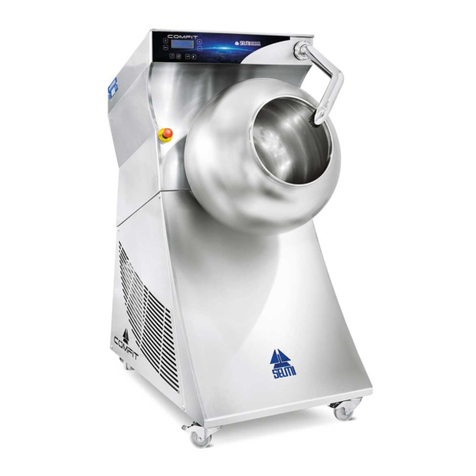
SELMI
SELMI COMFIT Troubleshooting guide
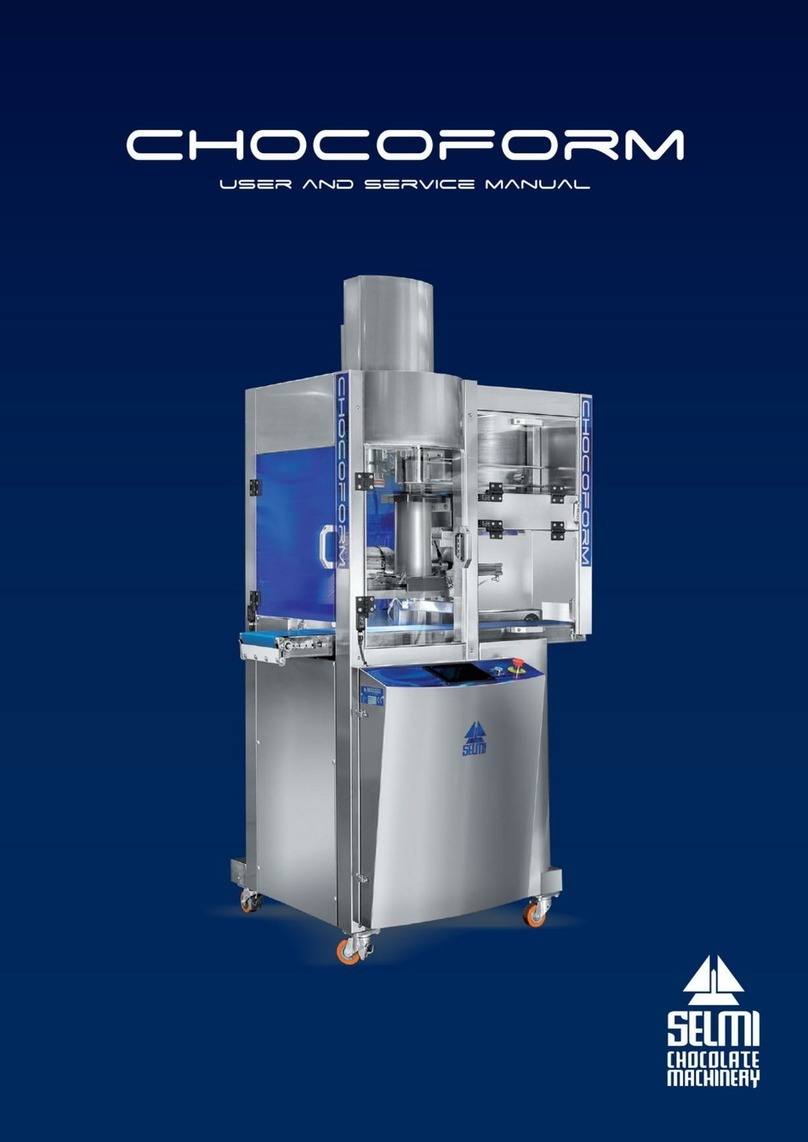
SELMI
SELMI CHOCOFORM Troubleshooting guide
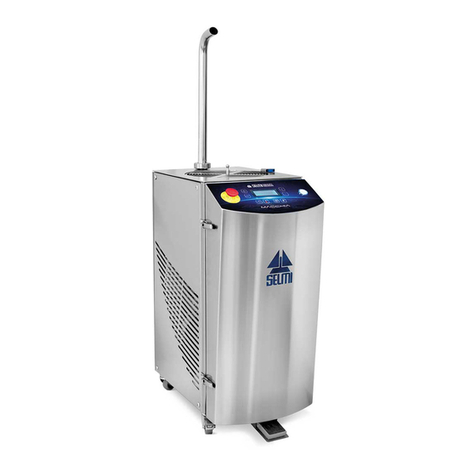
SELMI
SELMI Macchia Troubleshooting guide
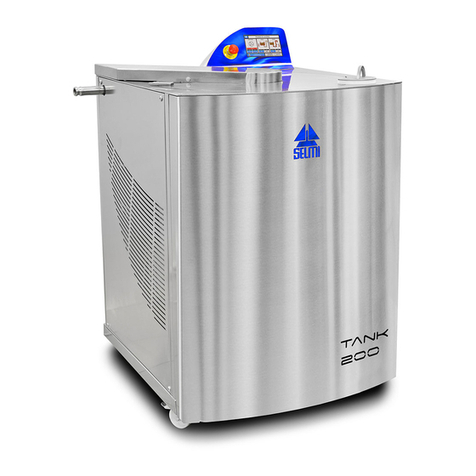
SELMI
SELMI TANK 200 Troubleshooting guide
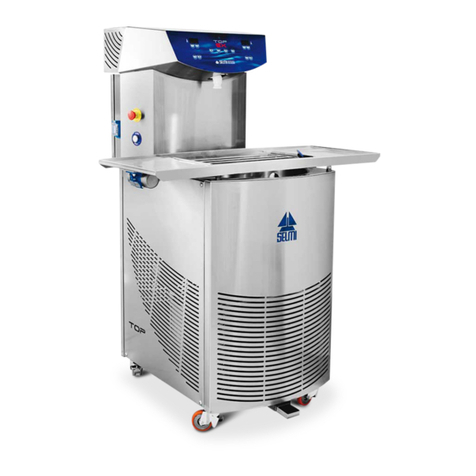
SELMI
SELMI TOP EX Troubleshooting guide
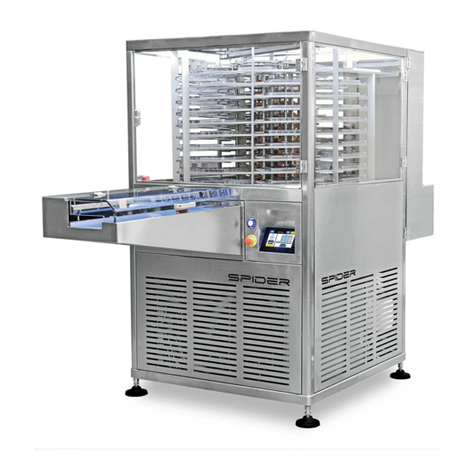
SELMI
SELMI SPIDER Troubleshooting guide
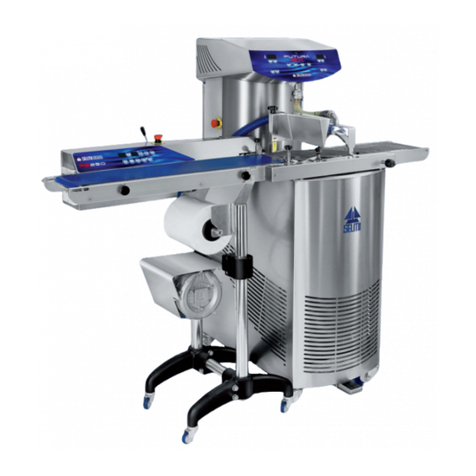
SELMI
SELMI RS250 Troubleshooting guide
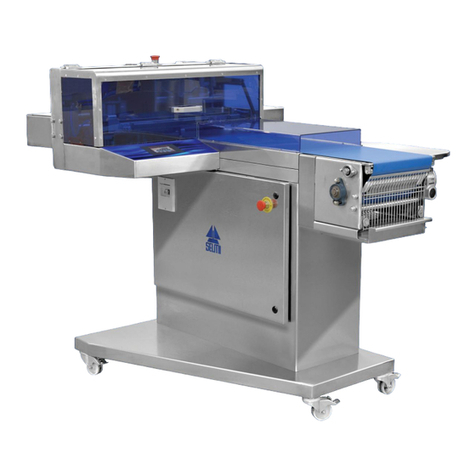
SELMI
SELMI Demoulding Troubleshooting guide
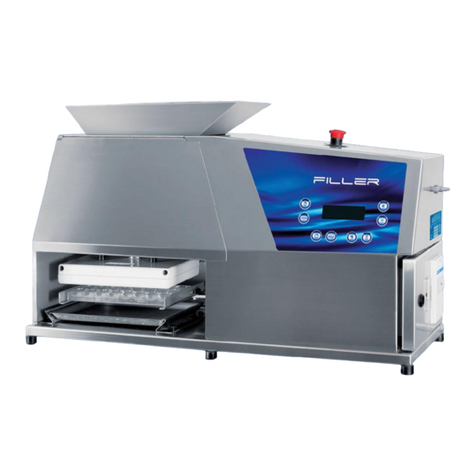
SELMI
SELMI Filler Troubleshooting guide
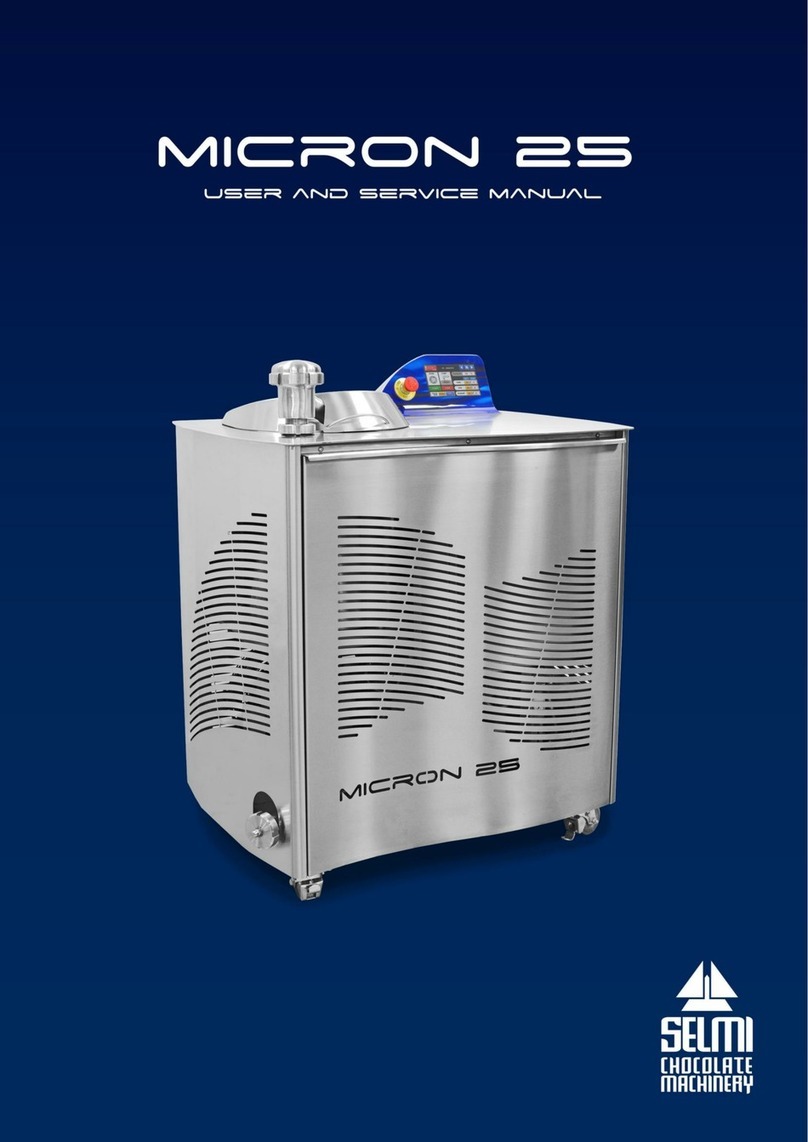
SELMI
SELMI MICRON 25 Troubleshooting guide
